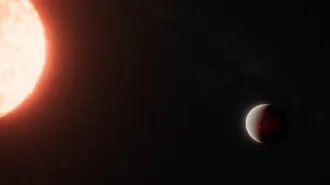Solo planets may be surprisingly common
Wandering worlds — with no parent star — raise questions about what it means to be a planet
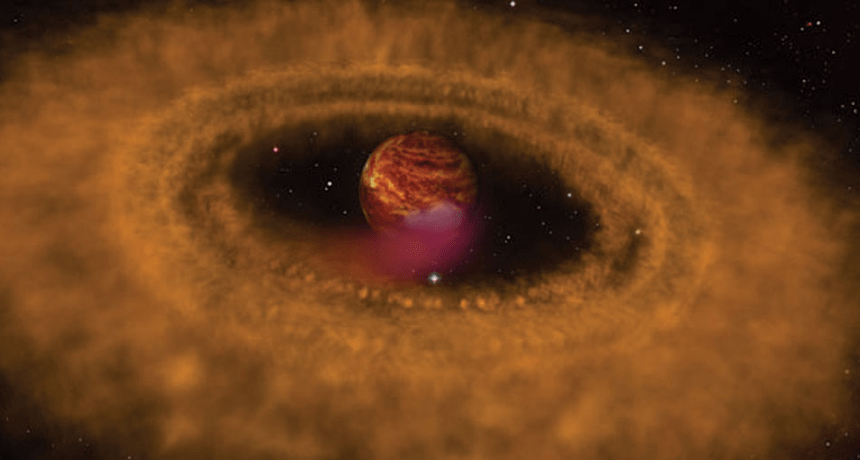
GOING ROGUE A disk of gas and dust swirls around OTS 44, a rogue planet shown in this artist’s illustration. It may have formed the same way stars are made.
A. M. Quetz/MPIA
- More than 2 years ago
Out among the stars, toward the constellation Capricornus, a red sphere floats freely through space. It doesn’t have enough mass to fuse atoms for fuel, as stars do, and it’s too small to be a failed star. In nearly every way, this drifter, known as PSO J318.5-22, is like a planet. Except it fails one key test for planethood: It does not orbit a star.
PSO J318.5-22 is homeless. With no parent star to give it heat or light, it drifts in eternal darkness, a rogue of the Milky Way.
Computer simulations in the 1970s gave planetary scientists their first hints that rogue planets might exist. As planets formed around a star, some planetary material would have been scattered into far-flung orbits. A few miniplanets may have been tossed far enough to be ejected completely from the star’s gravitational grasp.
Later estimates suggested that every planetary system in the galaxy booted at least one planet into interstellar space. With billions of planetary systems in the Milky Way, there may be billions, maybe even hundreds of billions, of rogue planets in the galaxy, says planetary scientist Sara Seager of MIT.
The first actual observations of what appeared to be free-floating planets came in 2000, suggesting that the simulations were on to something. In the last 15 years, astronomers have stumbled upon about 50 of these planetlike worlds. Some have all the characteristics of planets, minus a parent star. Others raise questions about how stars and planets can form. They all appear to challenge the standard definition of a planet.
It’s time to go beyond serendipitous discoveries, says Michael Liu of the University of Hawaii in Honolulu. He would like to see a systematic search for other untethered worlds.
“A census of rogues,” Liu says, “is the only way we are going to fully understand the extent of what’s out there in the Milky Way.”
Isolated giants
Liu and his colleagues first spotted PSO J318.5-22 in 2010; they confirmed and reported the finding in 2013 (SN Online: 10/9/13).
The researchers detected the planet in images taken with the Maui-based Pan-STARRS 1 telescope. The team had been looking for failed stars called brown dwarfs, which appear to start their lives in the same way stars do: A clump of gas breaks free from a cloud of cold, dense gas and collapses, pulling material inward into a swirling disk around it. At the center of this disk is a baby star or, depending on the size of the original gas clump, a brown dwarf.
Two traits distinguish a star from a brown dwarf and to an extent, from a planet: mass and the presence or absence of nuclear fusion. Stars, even small ones, are at least 80 times the mass of Jupiter, which at 318 times the mass of Earth is the most massive planet in the solar system — and is often used by astronomers to gauge the size of other gaseous objects. According to theoretical calculations about how stars work, objects must be 80 Jupiter masses or more to fuse hydrogen nuclei (protons) into helium. This process liberates energy, which is how stars burn bright, speckling the night sky.
Brown dwarfs are smaller, anywhere between 13 and 80 Jupiter masses. They are not dense enough to fuse hydrogen. But they may have been big and hot enough to fuse deuterium nuclei (a proton plus a neutron) with protons or other nuclei, which means they once generated energy but no longer do.
Any sphere less than about 13 Jupiter masses is not large or dense enough to fuse any kind of atomic nuclei. As a result, some astronomers define orbs with less than roughly 13 Jupiter masses — even untethered ones — as planets.
Story continues after slideshow
Spotting floaters
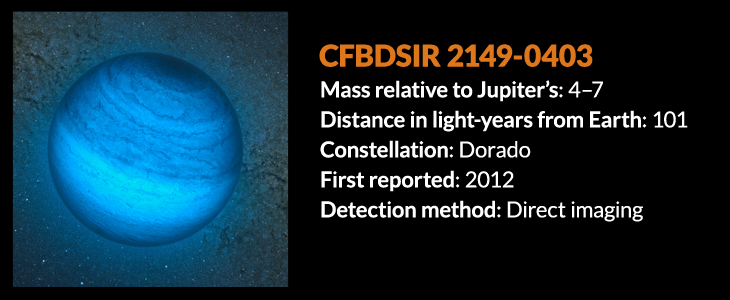
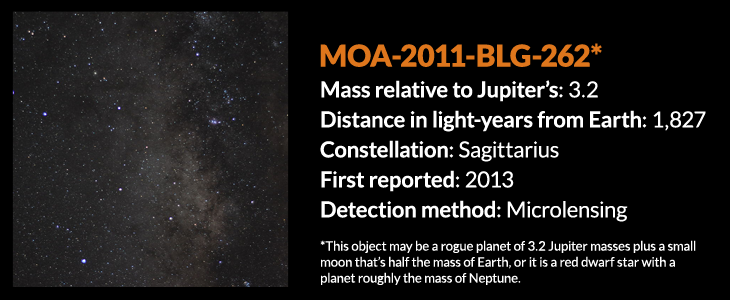
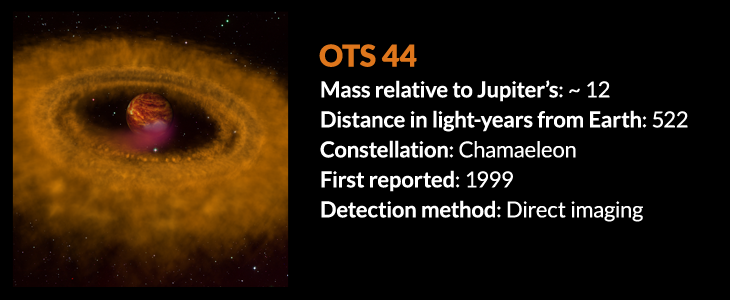
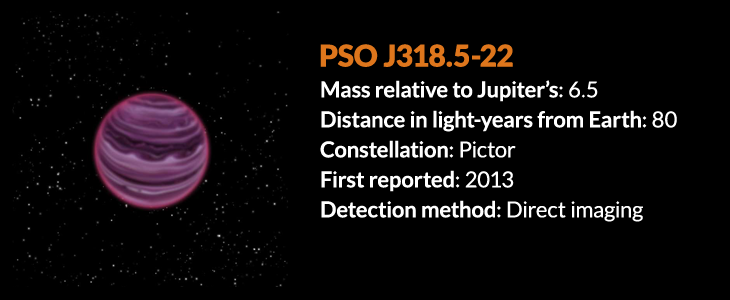
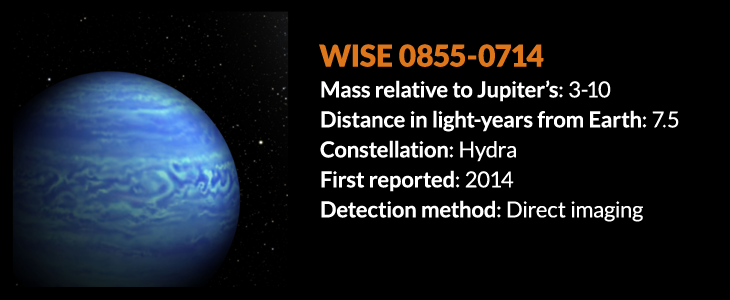
This has been a point of contention in the astronomy community. When astronomers started reporting free-floating planetary mass objects in 2000, they dubbed them “isolated giant planets.” That simple description set off a heated debate about whether the free‑floaters should be bestowed planethood. In 2003, the International Astronomical Union — the same organization that demoted Pluto to a dwarf planet — weighed in. The IAU said planets orbit the sun. Period. Planets that orbit other stars are extrasolar planets, or exoplanets, and rogues with planetary masses that do not orbit a star are not planets; they are sub–brown dwarfs.
The IAU’s definitions drew a clear dividing line between stars, brown dwarfs, sub–brown dwarfs and planets. But in reality, Liu says, the galaxy’s contents are much more complicated.
Around the time of the IAU announcement, Liu joined the hunt for brown dwarfs and exoplanets. In fact, when he and his team first spotted PSO J318.5-22, they thought it might be a brown dwarf. But it was “like nothing we’d seen before,” he says. It was dim and extremely red, redder than any brown dwarf. A closer inspection with larger telescopes confirmed that the object was more like a planet. PSO J318.5-22 is about 6.5 times the mass of Jupiter — well within the size range of a planet. Its color, brightness, atmosphere and mass are also similar to those of the young, dusty exoplanets that orbit the nearby star HR 8799 (SN: 4/6/13, p. 5), the team reported in 2013 in the Astrophysical Journal Letters.
Rogues are hard to see for two reasons: their lack of a parent star and their size. Planets in orbit tug on their parent star or block its light, which gives clues that the planet exists. This is how the Kepler space telescope and others find far-off worlds. And because rogues are small, they don’t give off a lot of heat and light compared with stars, which makes them faint and easy to miss with infrared and optical telescopes.
Despite these challenges, Liu and other astronomers have found about 40 planetlike rogues using infrared and optical telescopes. These instruments are pretty good at spotting larger rogues, but they tend to miss smaller, Earth-sized ones. That’s where gravitational microlensing comes in. A massive object can act as a gravitational magnifying glass, bending and brightening the light of a background star that happens to lie directly behind it as seen from Earth. About a dozen rogues have been identified with microlensing.
Violent and messy
Mass isn’t everything when determining whether an object is a star or a planet. What really matters, says Kevin Luhman of Penn State, is how the rogue was created.
Based on computer simulations, astronomers suggest two scenarios for how rogues are made: They either got kicked out of a planetary system early on, or they formed just like stars but on a smaller scale.
The formation of planetary systems is extremely chaotic. It starts with a glob of gas and dust that breaks away from a much larger cloud containing material to support the start-up of many stars. As the glob pulls away, gravity forces everything toward its center. The center becomes more and more compressed, gets hotter and becomes the beginnings of a newborn star. Chunks of rock, ice and dust start to swirl around this stellar kernel. The chunks stick together to form boulders and then continue to grow bigger into planets. These planets can get pulled in toward the star and then pushed farther out.
As the planets jockey for position, they play a violent and messy game of ping-pong with others around them. In the end, there’s not enough gravity to keep all the planets circling the parent star. One or more get knocked into space, according to this scenario, and rogue planets are born.
There’s evidence of this kind of roughhousing even within our own solar system (SN: 3/21/15, p. 14), Seager says.
The first hint of these shenanigans came from the Oort cloud, a swarm of trillions of ice chunks tethered to the sun by gravity (SN: 10/19/13, p. 19). The Oort cloud, which extends to the farthest edges of the solar system, forms a bubble of debris around the sun and its planets. It is probably made of rubble that was thrown out of the inner solar system as the planets took their places about 4 billion years ago, Seager says.
In order for Jupiter, Saturn, Uranus and Neptune to be orbiting where they are today, some simulations suggest, there was probably a fifth planet bouncing around with them at some point (SN: 5/5/12, p. 24). Jupiter eventually booted the hypothetical planet, with a mass similar to Neptune’s, into interstellar space, researchers from the Southwest Research Institute reported in 2011.
Not what, but how
Planetary ping-pong may not be the only way rogues are made, says astronomer Gösta Gahm of Stockholm University. He argues that planets may form without parent stars. Perhaps they form exactly the way stars do in the same regions of space, only on a much smaller scale. In stellar nurseries, big globs of gas and dust become stars. In Gahm’s theory, a glob of gas and dust, which can be just a few times the mass of Jupiter, can collapse and condense into a planet — a free-floating planet rather than a star or brown dwarf.
Gahm has detected hundreds of potential planet-forming gas and dust globs, called globulettes, in the Carina nebula, he and Tiia Grenman of Luleå University of Technology in Sweden reported in Astronomy & Astrophysics in May 2014. Gahm and colleagues also found some in the Rosette nebula, as reported in the same journal in 2013. Rosette, 5,200 light-years away in the Monoceros constellation, is a low-density cloud of gas at the center of a larger cloud of gas and dust where stars and planetary systems are taking shape. The Rosette nebula contains globulettes that are just starting to break away from larger gas clouds.
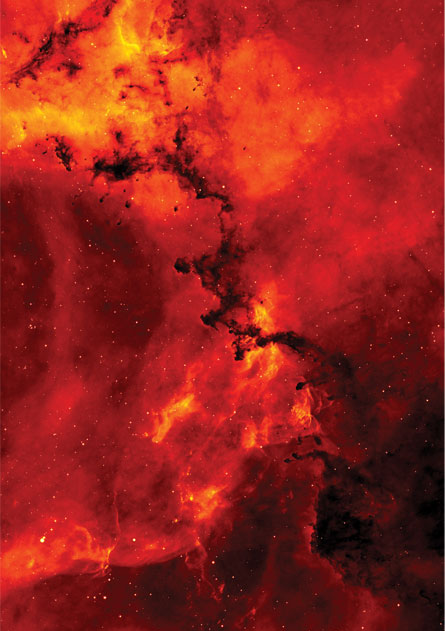
The Carina nebula, which sits about 7,500 light-years away in the constellation Carina, is one of the largest star-forming regions in the sky. It’s a diffuse cloud where stars are forming at a fast pace and where there are a lot of globulettes, some smaller than the mass of Jupiter. These tiny gas globs are smaller and denser than what’s been observed in other nebula, so they are possibly farther along in their path toward becoming free-floating planets, Gahm argues.
Thomas Haworth, an astrophysicist at the University of Cambridge, is delving deeper into how globulettes might transition from extremely tiny gas clouds to full-fledged free‑floaters. His simulations show that the tiny globs of gas don’t necessarily have enough gravity to collapse in on themselves and condense to form stars. Gahm argues that external pressure from hot gas from nearby new stars or some other turbulence could force the globulettes to condense. But when Haworth includes this type of turbulence in simulations, it’s still not enough to turn globulettes into planets. He and colleagues reported the findings in the January Monthly Notices of the Royal Astronomical Society.
That doesn’t mean the scenario is wrong, Haworth says. Globulettes could hit the boundary of a cloud where stars are forming, and, with the right amount of oomph, get squashed and collapse into a planet or brown dwarf, he says. He is working on simulations of this scenario and a few others.
“Globulettes are very numerous,” he says. “Even if only a small fraction can be made to collapse, they could make a significant contribution to the population of free-floating planets.”
One directly imaged free-floater, a rogue called OTS 44, appears to support Gahm’s globulette theory. Astronomers estimate that OTS 44’s mass is right around 12 Jupiter masses, at the high end of the mass of a planet. And it’s about 2 million years old — a newborn in the cosmic sense. OTS 44 also has a ring of gas and dust around it, and like a star, the gassy rogue is pulling on this disk of material to build itself up. Astronomers have seen this kind of accretion disk around planets that orbit small stars, but it has never been found around a free-floater before, researchers reported last year at a workshop on cool stars and the sun. The nomad appears to be in an advanced stage along Gahm’s globulette-based path to planethood.
That finding blurs the line that the IAU and others say separates stars and planets.
Luhman argues, however, that the formation process of a star is very different from the formation process of a small body within the gas and dust around a much larger object. “It is much more meaningful to distinguish between planets and brown dwarfs based on how they formed,” he says.
No interference
For all the problems they pose for scientists, rogue planets do have some benefits. “One of the best things about rogue planets is that they don’t have a blinding parent star to wash out their atmospheres,” Liu says. “Rogues have given us an incredible view of planet composition, and they can tell us about planets that do orbit stars.”
Comparing the atmospheres of rogue planets with those of brown dwarfs and stars could be the best way to distinguish the types of spheres from each other. Such comparisons could reveal how different free-floaters formed and lend credence to Luhman’s argument that if it formed like a star, it’s a star, and if it formed like a planet, it’s a planet. That kind of detail could require a new definition of the word planet, one that may need to include rogues.
Sifting through the rogues’ atmospheres could also reveal whether they have signs of life. David Stevenson, a planetary scientist at Caltech, was among the first to argue (in Nature in 1999) that if free-floaters retained their hydrogen atmospheres, they could stay warm enough to have water oceans and possibly harbor life. Others have invoked dark matter to explain how rogues could support life without energy from a nearby star.
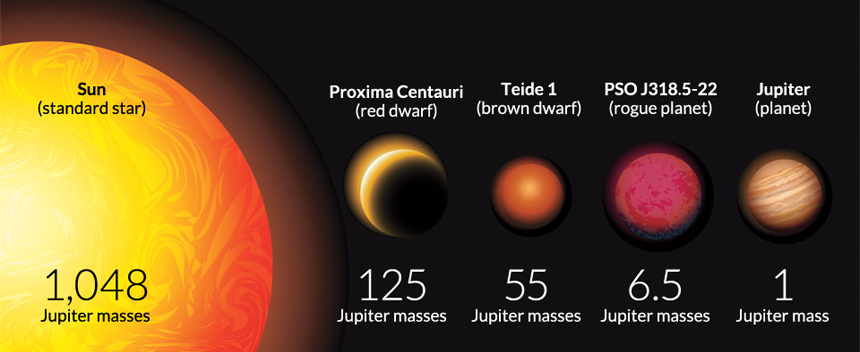
In this far-out scenario, dark matter, in the form of weakly interacting massive particles, comes in contact with atomic nuclei, loses momentum and gets pulled in by a planet’s gravity. The dark matter particles build up in the planet’s interior, where they bang into and annihilate each other. This interaction creates energetic particles that get absorbed by surrounding material, providing heat to the planet. It could happen at high enough rates to heat the planet to a temperature that keeps liquid water on its surface, even without the help of a parent star’s light, scientists argued in a 2012 paper in the Journal of Cosmology and Astroparticle Physics.
Seager agrees that it may be possible for rogues to have the right surface conditions for life.
Finding evidence to support the idea, however, will require a more complete census of rogues, both big and small. PSO J318.5-22’s extreme redness appears to be a signature that astronomers can use to find more, at least the bigger ones. Liu has tried it and may have hit on four or five more free-floaters already, he says. As for the small ones, some may have been spotted indirectly. But taking images of these smaller ones and exploring their atmospheres to look for signs of life is going to require much more powerful telescopes, a few of which are slated to come online in a decade or so.
“We’re trying to understand the full range of planet systems,” Seager says. Bigger telescopes will help astronomers understand what’s still in a planetary system, what’s been forced out and what else is out there.
Astronomers may just find that our galaxy is swarming with wandering worlds.
This article appeared in the April 4, 2015 issue of Science News under the headline, “Wandering Worlds.”

